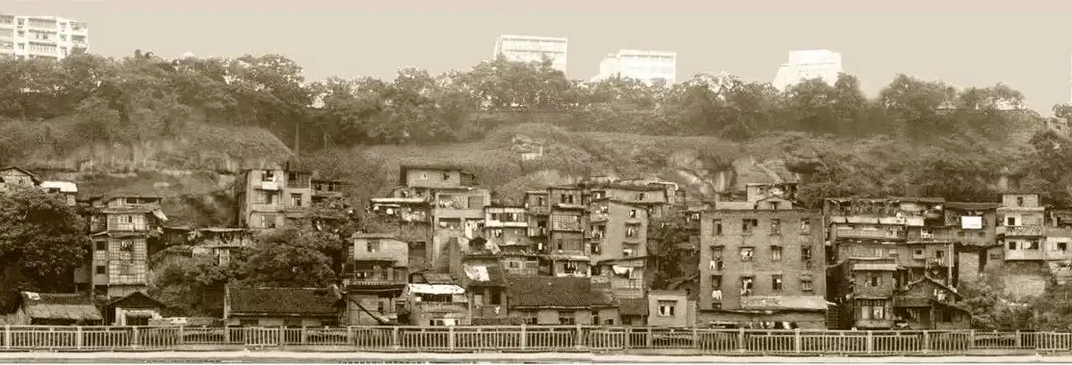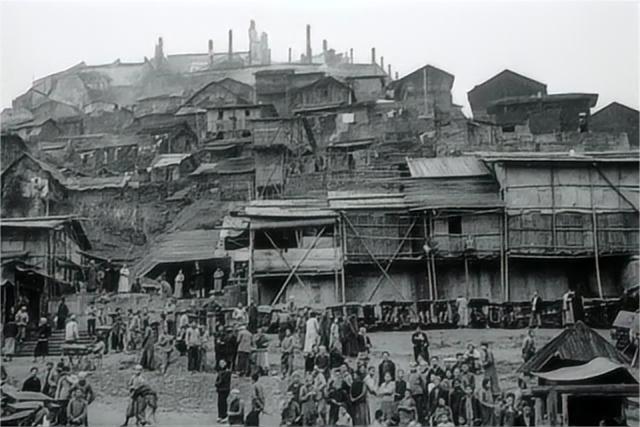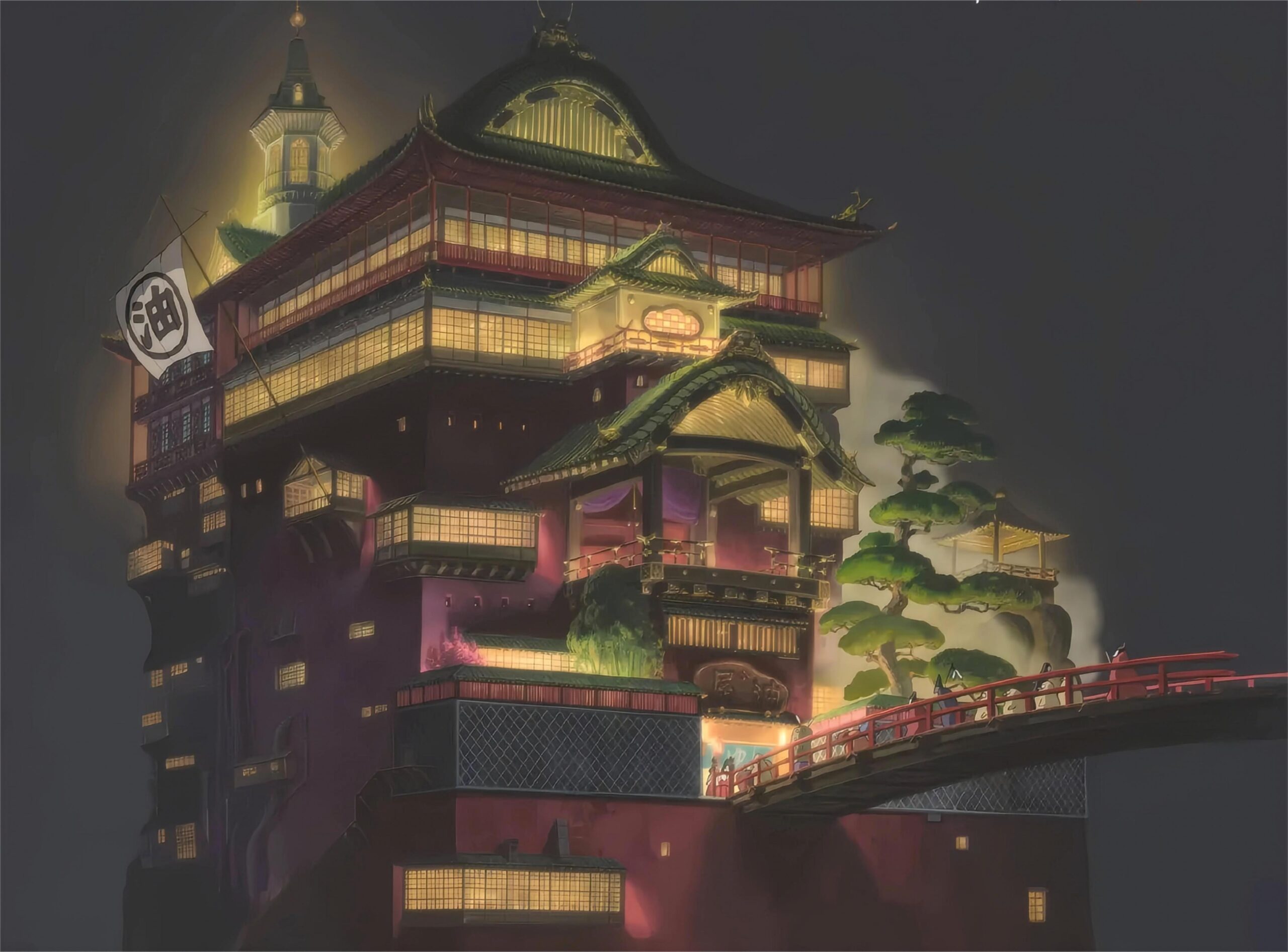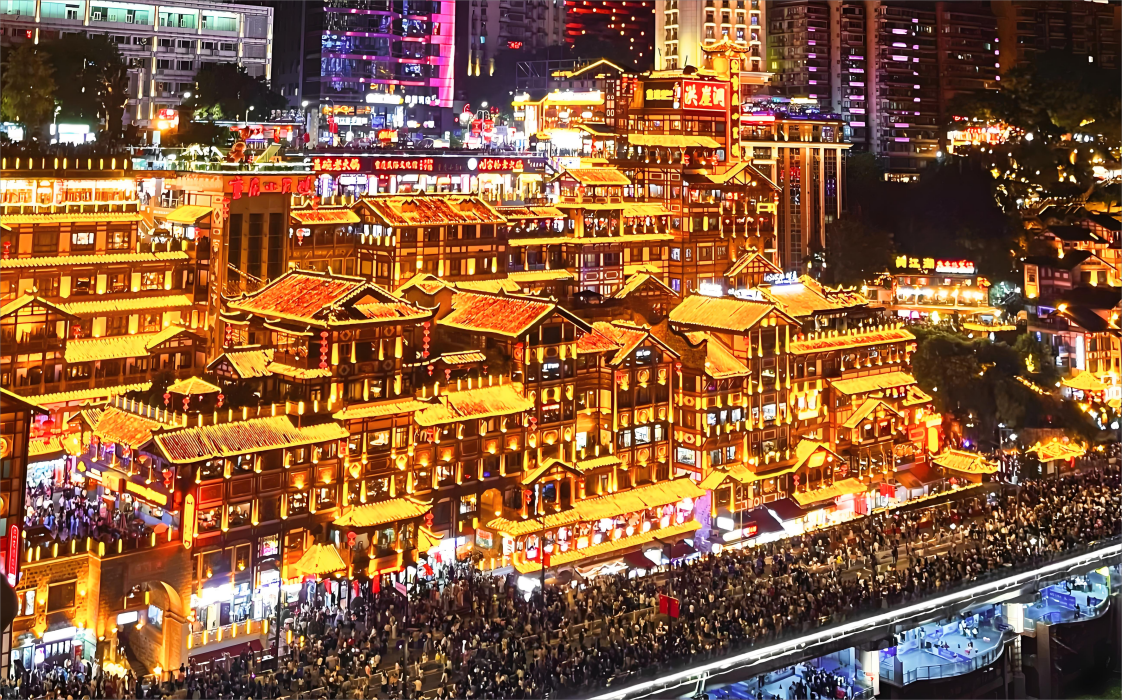
Hongyamen in 1941

Hongyamen in 1945

The old appearance of Chongqing Hongyadong before demolitionThe old appearance of Chongqing Hongyadong before demolition

Hongyadong in the period of the Republic of China

The current Hongyadong

The current Hongyadong
As for the historical origin of Hongyadong, it has already been recorded in the old city maps of the Qing Dynasty and “Ba County Annals”, so there’s no need to elaborate on it. What’s worth mentioning is that there was a place right beside Hongyadong where the famous American writer Ernest Hemingway lived during the period when Chongqing was the provisional capital during the War of Resistance against Japanese Aggression. When the old city was being renovated, the relevant cultural relics department planned to set up a project to protect this building from the period of the Republic of China. However, the real estate developer who had obtained the land use right, upon hearing this news, immediately took preemptive action and demolished it overnight. Alas, what a pity! Hongyadong has since lost the opportunity to reunite with the famous work “The Old Man and the Sea”, which won the Nobel Prize in Literature. Mr. Wu Tao from the Chongqing Cultural Bureau at that time went around appealing and was busy for quite a while, but in the end, all his efforts came to nothing. Perhaps China’s history is too long. Some people only focus on immediate interests and don’t value historical remains at all. Wu Tao used to be the secretary-general of the Chongqing Famous Historical and Cultural City Special Committee and has unfortunately passed away. His sad and regretful feelings for this matter back then are still vivid and unforgettable.

“Map of Ba County City” in “Ba County Annals” (1761) (Source: Wang Erjian: “Ba County Annals”, Qianlong period of the Qing Dynasty)
Regrets aside, let’s talk about some stories about the construction of Hongyadong.

The second floor of Chuanmei Company in Hongsheng Building, Jiefangbei, which was once the working platform for the planning and design of the Hongyadong historical and traditional cultural style area
First of all, it was the research. Here, I have to thank the postgraduate and undergraduate students of Hao Dapeng who studied in the Design Department of Sichuan Fine Arts Institute. My postgraduate student Xiao Zhihui participated in the whole process. I still remember a very capable young girl named Huang Hongchun. She nimbly moved around among the uneven stilted buildings in Hongyadong, like a little flower cat jumping up and down. The result of the research was six large volumes of eight-open data collections, which sorted out the current situation of various stilted buildings and other buildings in the area. For Hongyadong, considering the dangerous building level and engineering safety of Hongyadong, the government did not require to preserve the current situation for the old city renovation of Hongyadong but to demolish and rebuild. The detailed surveying and mapping aimed, on the one hand, to figure out the three-horizontal and eight-vertical road network structure of Hongyadong to provide historical basis for the construction of the historical and cultural style area, and on the other hand, to fully understand the characteristics of the existing building prototypes so as to provide references for the building forms to be implemented in the future.

Little Swan in Hongyadong
Here, I have to mention He Yongzhi. She is really quite a remarkable person. It’s true that Chongqing women are all capable. He Yongzhi didn’t receive much education and only graduated from junior high school, but she was born with business acumen. In the era of reform and opening up after the “Cultural Revolution”, she was one of the first ten-thousand-yuan households in the hot pot business. It’s said that she invented the mandarin duck hot pot and calls herself the “Hot Pot Queen”. When working on the Hongyadong project, I divined for her using the “Book of Changes” in her Little Swan Hotel, and her fortune was so good that few could compare. It seems that He Yongzhi’s cross-border bidding for Hongyadong was not without reason. (He Yongzhi is now the person in control of Hongyadong)

The light rail passing through the building at Liziba is a major feature of Chongqing. The light rail Line 2 passes through residential buildings, forming a unique urban landscape.
It was also at this time that an inexplicable mysterious force began to play a role, that is, He Yongzhi’s luck and destiny. The Japanese animated TV series “Spirited Away” was broadcast and became a huge hit among young people. Somehow, a little girl accidentally discovered that a scene in the cartoon was very similar to the facade photo of Hongyadong’s buildings, and then it was widely praised. From getting likes to becoming an online celebrity, it suddenly became famous. An online celebrity is popular on the Internet, just like the flood peak of the Jialing River at Hongyadong. What’s important is to have a commonly accepted saying, which is “I love you somehow, without reason or cause” – that’s what the popular song sings.

“The Bathhouse” in Hayao Miyazaki’s “Spirited Away”
Every time at this moment, I can understand why He Yongzhi has always said that Hongyadong was built by herself and seems to have become the founder. Objectively speaking, He Yongzhi is indeed the investor of the cultural and tourism project in the Hongyadong historical and cultural style area and also an important organizer and builder. However, the reason why Hongyadong has become a major highlight or even the brightest spot in Chongqing’s urban tourism is the result of the dedicated efforts of many people, including the students majoring in design at Sichuan Fine Arts Institute.

Many students majoring in design and the Fine Arts Department of Sichuan Fine Arts Institute participated in the planning of Hongyadong
So, if someone mentions the experience of participating in the research on Hongyadong or something like that, I will express my special thanks to them. I think He Yongzhi, as the boss of the Hongyadong scenic area, should probably do the same.

The current Hongyadong

